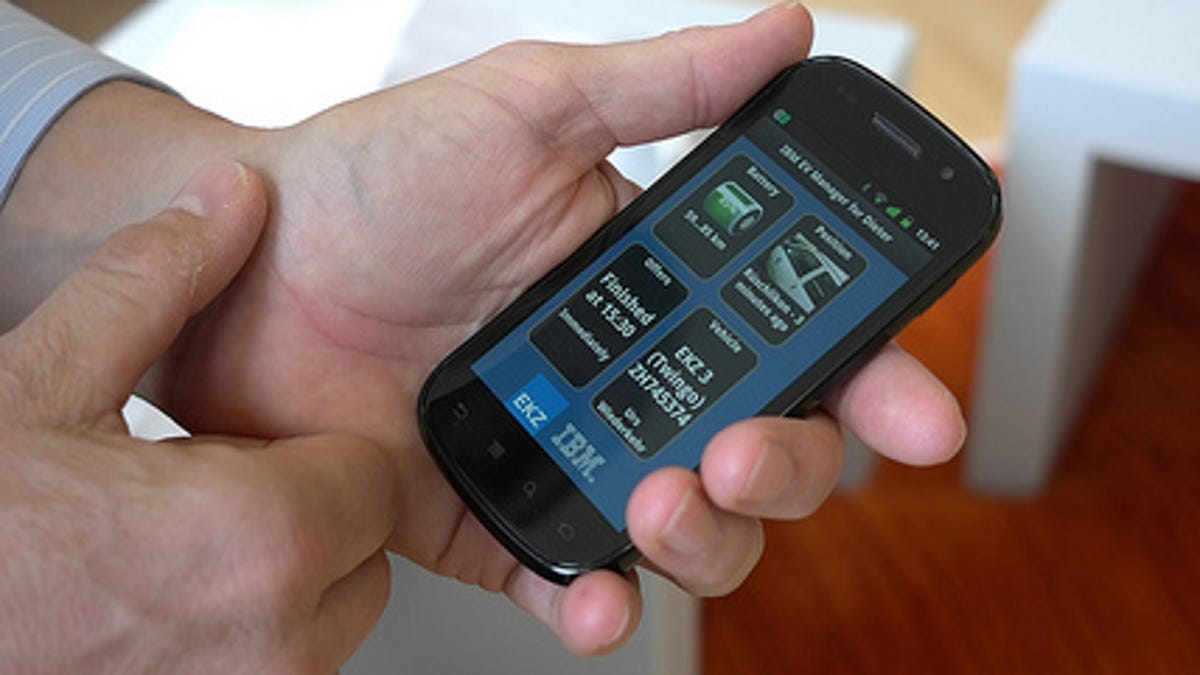IBM developing EV app to let drivers select renewable energy
The pilot program is connecting EV systems and renewable energy production to the cloud to help drivers recharging their vehicles when clean energy is available.

IBM is testing a cloud-based EV charging application in Switzerland that will let drivers choose between fossil fuel or renewably generated electricity to recharge their electric vehicles. By letting drivers schedule recharging at peak renewable energy production times, the new service could help integrate electric vehicles into the market without straining power grids.
The proliferation of electric cars in the market will require only a few more percent electricity than is already produced, according to Swiss utility EKZ. However, if all EVs plugged into the grid recharged at the same time, it could cause widespread blackouts.
IBM is testing a service that could help prevent that situation by letting drivers know when the most--and greenest--energy is being produced. Its Web-based app communicates with the vehicle and power companies to let drivers know when the most wind, solar, or hydro electricity is being produced, and schedule charging during those times.
Switzerland currently generates approximately 55.6 percent its electricity from renewable sources, primarily hydropower. By scheduling electric vehicles to charge at peak renewable energy production times, IBM's app can help accommodate the influx of EVs into the market by minimizing the strain on the electricity grid or using more fossil fuels.
"Electric vehicles can be used to buffer the irregular production of electricity from future renewable sources, which will contribute to the overall stability of the electrical network," said Peter Franken, head of the Energy Distribution department of EKZ, in a news release. "With this project we can show how electric vehicles can create a balance between supply and demand for smarter energy grids."
How it works
A small device installed in the electric car transmits the battery and charging information over the cellular network to IBM's cloud based system, which also communicates with the power companies to stream real-time electricity rates and demand.
A Web-based application that can run on most smartphones, tablets, and Web browsers displays this information to EV drivers, and enables them to schedule charging when they see rates are the lowest, or turn the process over to the power company to schedule charging when renewable energy production is at the highest level.
In the pilot project, real-time production data of photovoltaic solar panels located at EKZ's facility in Dietikon, Switzerland, is transmitted to IBM's cloud. An electric vehicle connected to the grid is charged when solar electricity is being produced, and the system can adapt to other supplies if solar production is low.

